Compared: 2022 Jeep Grand Cherokee L vs. 2022 Jeep Grand Wagoneer
Jeep's three-row SUVs share design cues and features, but from cargo space to horsepower to luxury appointments, there's more of almost everything in the Grand Wagoneer.
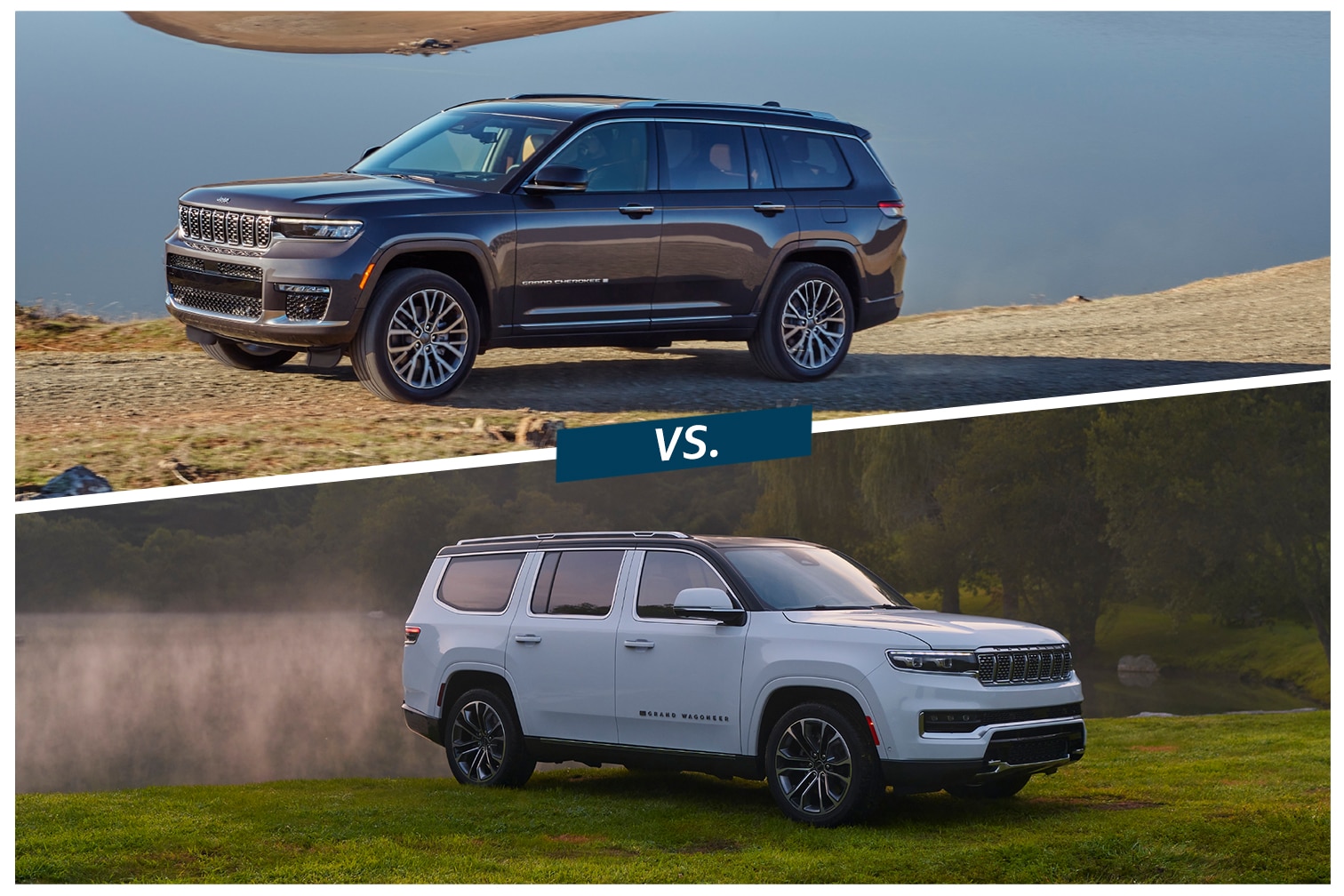 Jeep
Jeep
Article QuickTakes:
Jeep’s three-row SUV duo looks similar at first glance, but a second take reveals differences in scale between the 2022 Jeep Grand Cherokee L and the 2022 Jeep Grand Wagoneer. Perhaps most important for people hauling friends and family is that the Grand Wagoneer is a full-size, body-on-frame SUV that can seat up to eight while the mid-size, unibody Grand Cherokee L seats up to seven.
Here’s how the two differ on price, interior dimensions, features, and towing.
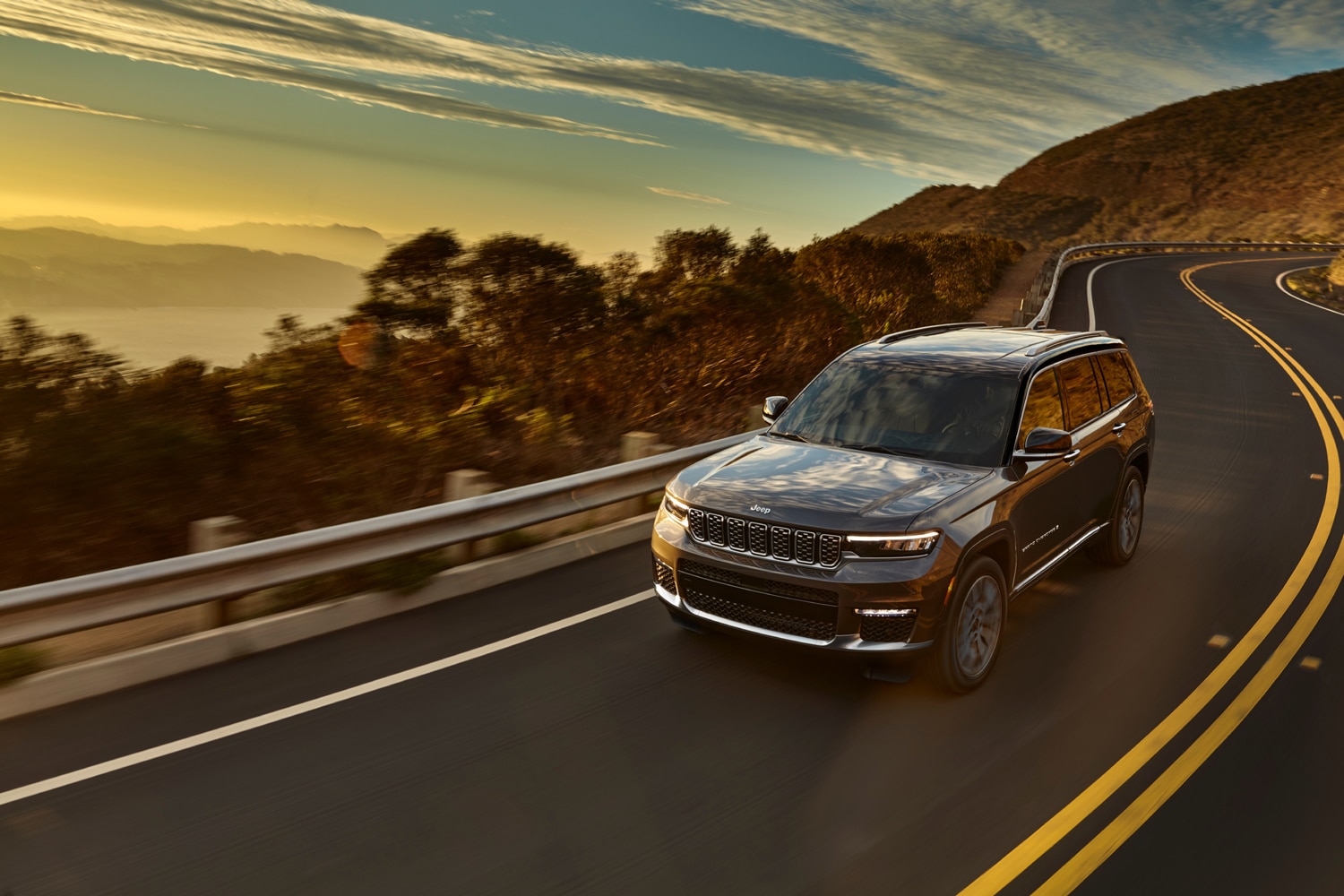 Jeep Grand Cherokee L
Jeep Grand Cherokee L
Jeep Grand Cherokee L vs. Jeep Grand Wagoneer: Price
The 2022 Jeep Grand Cherokee L starts at $43,000 for the Laredo trim with a 293-hp V6 and rear-wheel drive. Upgrading to four-wheel drive is available for all trim levels and costs $2,000, while a 357-hp V8 is available on Overland and Summit models starting from $64,000. For additional tech features, the Grand Cherokee L offers Luxury Tech Group I for $1,400, the luxury side of which includes heated front seats, a power liftgate, and third-row USB ports.
 Jeep Grand Wagoneer
Jeep Grand Wagoneer
Meanwhile, the Jeep Grand Wagoneer starts around $91,000 with a 471-hp V8 and four-wheel drive standard across the line. The Grand Wagoneer offers a suite of advanced driver assistance features, such as drowsy driver detection and “Night Vision” pedestrian and animal detection for $4,195. If all that seems a bit rich for your budget, you may want to check out the less lavish 2022 Jeep Wagoneer, which uses a less-powerful V8 engine, comes standard with rear-wheel drive, and starts just above $61,000.
 Jeep Grand Cherokee L
Jeep Grand Cherokee L
Jeep Grand Cherokee L vs. Jeep Grand Wagoneer: Interior
The Grand Wagoneer is larger than the Grand Cherokee L in every dimension, inside and out. It offers 27 cubic feet of space behind the third row of seats, and a passenger volume of 179 cubic feet. The Grand Cherokee L instead comes with 17 cubic feet behind the third row and 159 cubic feet of passenger space.
Many of the Grand Wagoneer’s niceties, such as the suede headliner and the genuine wood and metal trim, need to be seen and felt to be fully appreciated. The more expensive model comes with leather seats, front parking sensors, and a power tilt/telescoping steering wheel as standard equipment, all of which are extra-cost upgrades on the Grand Cherokee L. Buyers can also splurge on luxuries like 24-way power driver and front-passenger seats in the Grand Wagoneer that aren’t available in the Grand Cherokee L.
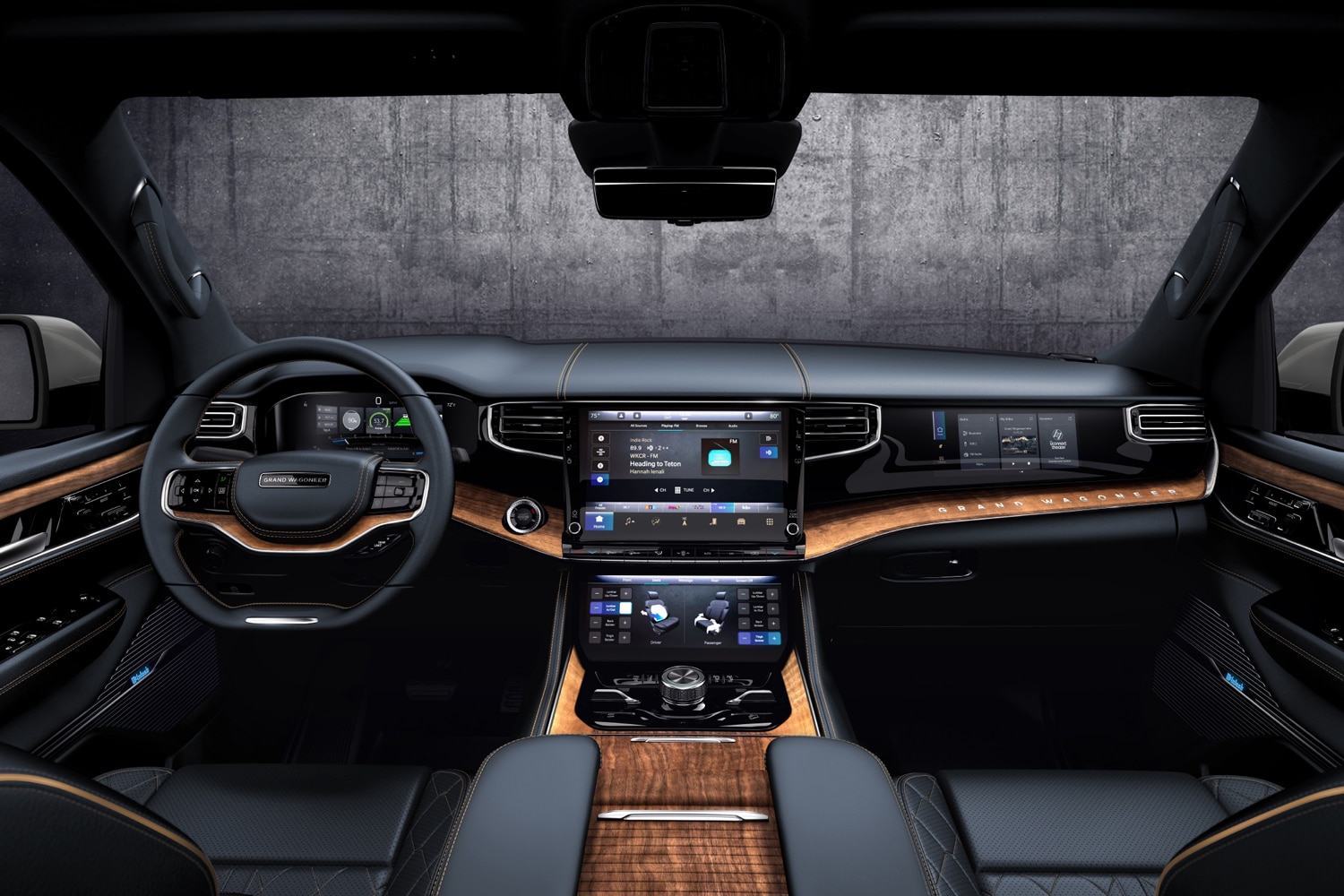 Jeep Grand Wagoneer
Jeep Grand Wagoneer
The standard Uconnect 5 infotainment system is displayed on a 12-inch touchscreen display in the Grand Wagoneer and either an 8.4- or 10.1-inch screen in the Grand Cherokee L. The Front Interactive Display, optional in either model, puts another 10.3-inch screen in the passenger dashboard that offers controls for things like media and navigation, and costs $1,095 to $1,395. The screen can also be used by the front-seat passenger for entertainment while in motion. Both SUVs can be outfitted with a 19-speaker, high-performance audio system.
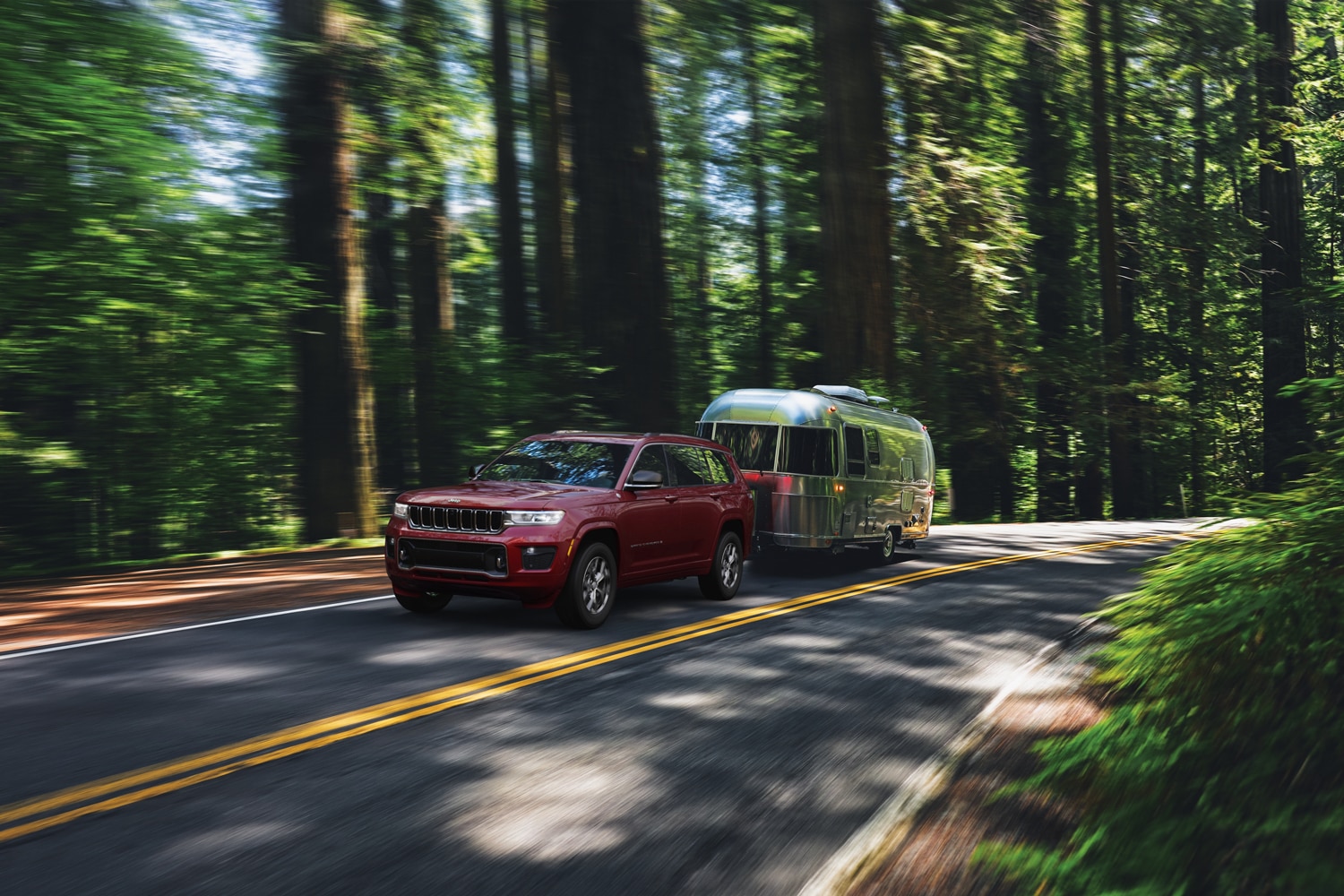 Jeep Grand Cherokee L
Jeep Grand Cherokee L
Jeep Grand Cherokee L vs. Jeep Grand Wagoneer: Towing
When equipped with the V8, the 2022 Grand Cherokee L can tow 7,200 pounds, while V6 models can tow up to 6,200 pounds. Both models have a maximum payload of 1,630 pounds. A $685 Trailer Tow Prep Group package adds rear load-leveling suspension and trailer-hitch zoom along with heavy-duty engine cooling.
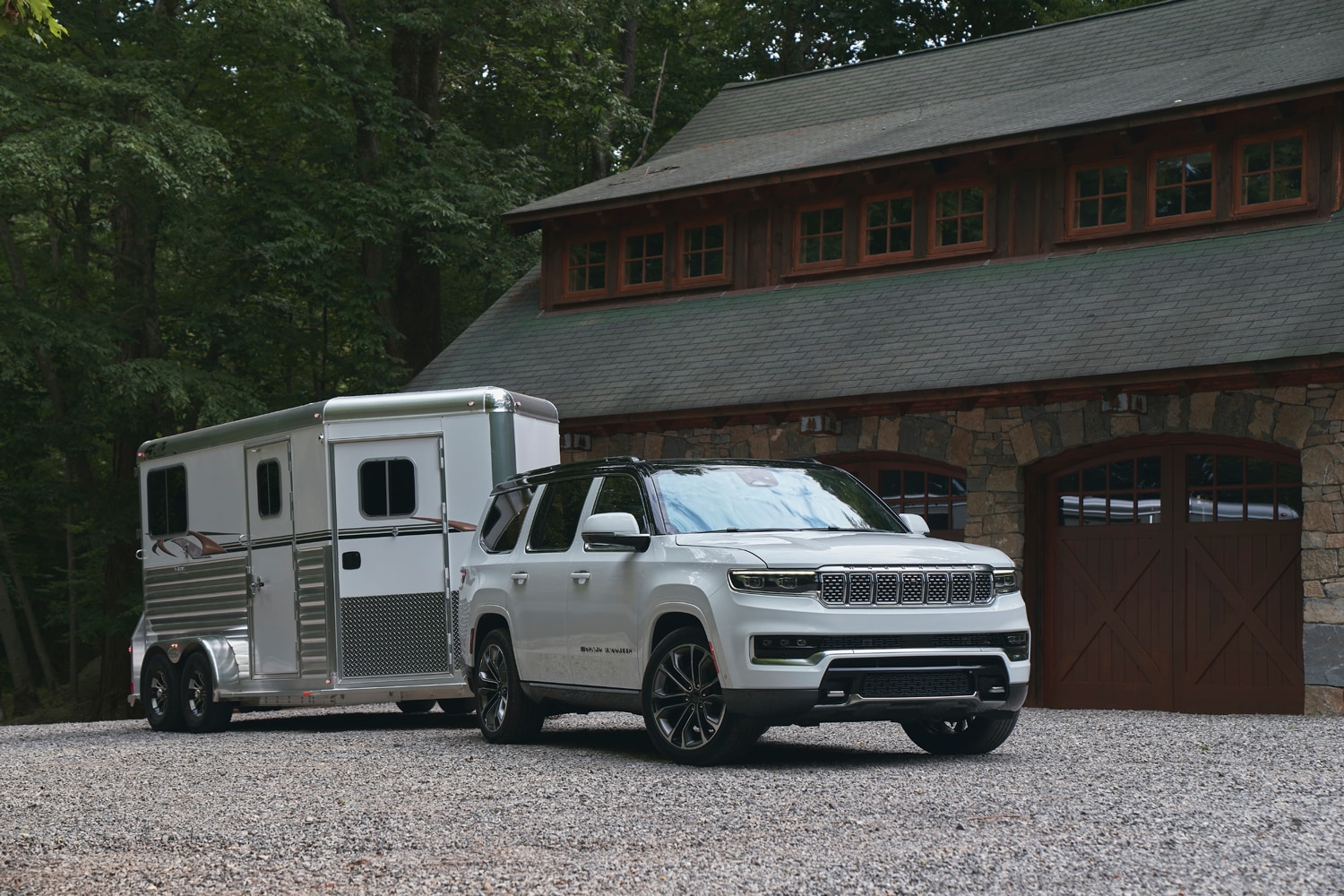 Jeep Grand Wagoneer
Jeep Grand Wagoneer
The more capable Grand Wagoneer can tow a maximum of 9,860 pounds, but has a smaller maximum payload at 1,450 lbs. The heavy-duty trailer-tow package, which adds chrome tow hooks and improved engine cooling, as well as three trailer assistance features (trailer brake control, trailer hitch line-up assist, and trailer hitch zoom) costs between $995 and $1,295, depending on trim.



